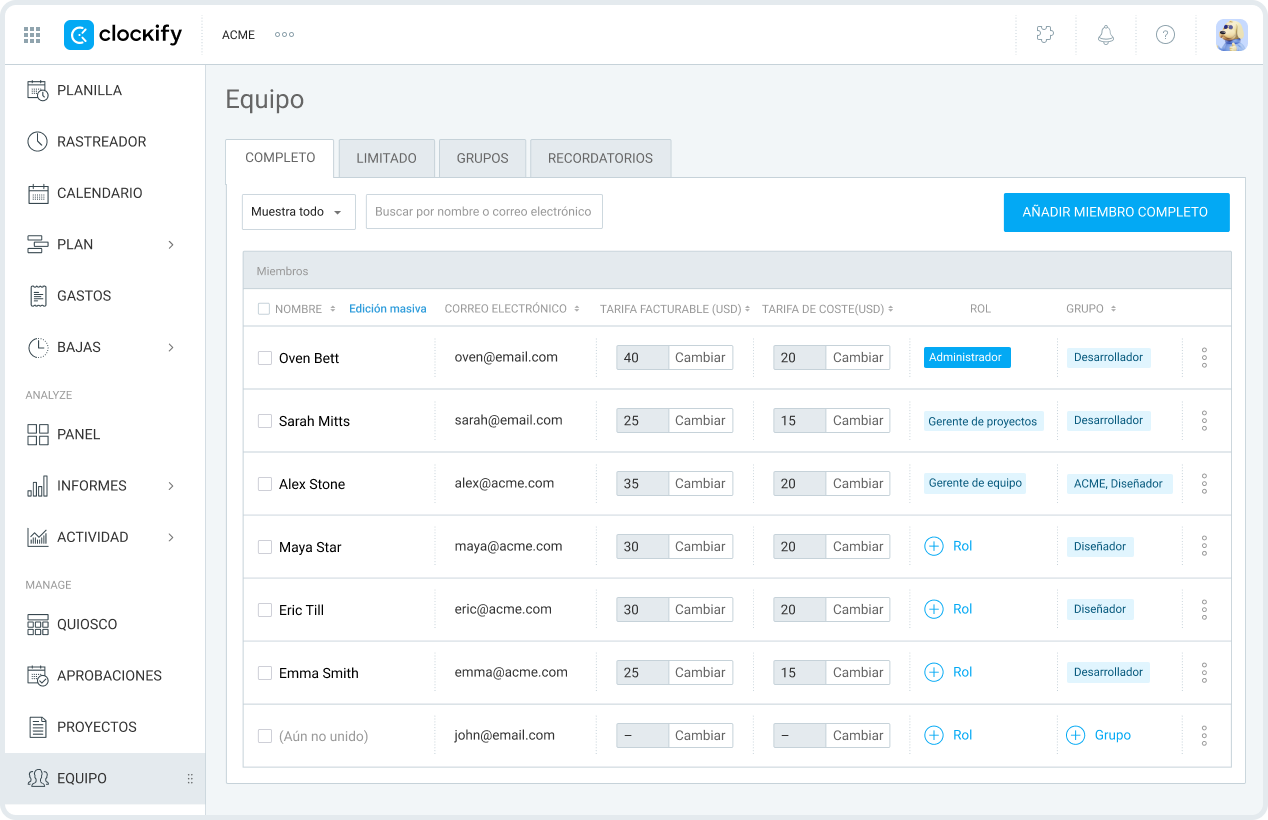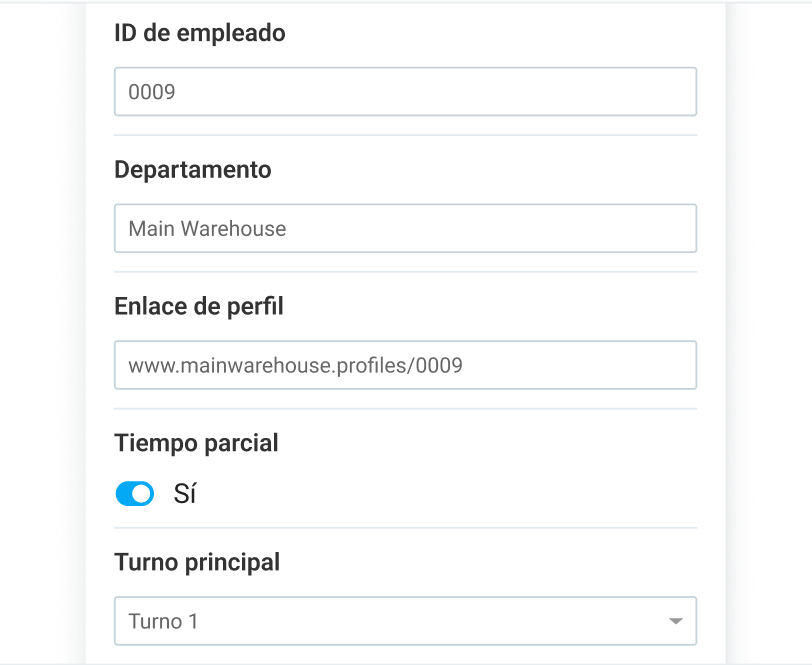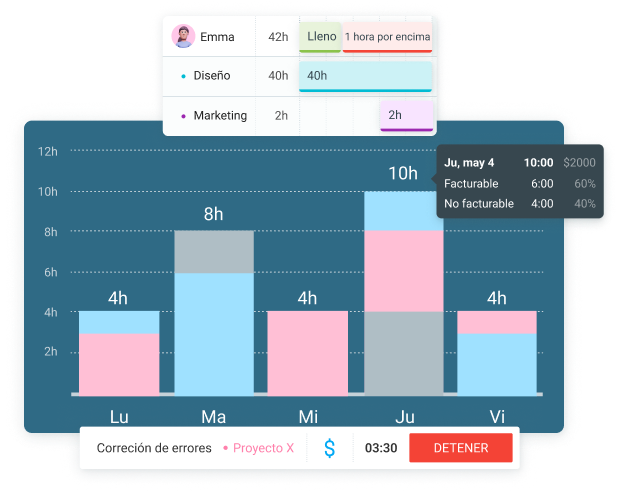La relación entre empleados y empleadores es crucial para cualquier empresa, ya que proporciona la base para cualquier acuerdo de trabajo.
Para que esta relación funcione y sea productiva, ambas partes deben conocer sus derechos y obligaciones, y esto a menudo se hace a través de un contrato de trabajo.
Los contratos de trabajo son un puente entre empleadores y empleados que tiene como objetivo organizar la relación laboral.
En este artículo, repasaremos los 7 tipos de contratos de trabajo más importantes que todos deben conocer. Además, brindaremos información de expertos sobre qué tipo de contrato de trabajo es adecuado para ti y cómo elegir el mejor.

- Los contratos de trabajo describen los derechos y responsabilidades de los empleadores y empleados.
- Los contratos de trabajo pueden presentarse como contratos escritos, verbales o implícitos.
- Los contratos de trabajo a tiempo completo son para empleados que trabajan más de 30 horas a la semana, mientras que los contratos a tiempo parcial son para aquellos que trabajan menos de 30 horas.
- Los contratos de trabajo permanentes no tienen una fecha de finalización específica, mientras que los contratos a plazo fijo sí la tienen.
¿Qué es un contrato de trabajo?
Un contrato de trabajo especifica la relación laboral entre un empleador y un empleado. Describe los derechos y obligaciones de ambas partes, proporcionando un marco que garantiza la seguridad y la estabilidad para ambas partes durante el transcurso del empleo.
En general, los contratos de trabajo individuales cubren información como:
- Detalles de salario,
- Horario de trabajo,
- Seguro médico y dental,
- Políticas de licencias,
- Licencias PTO (tiempo libre remunerado),
- Estatus de empleado exento o no exento,
- Duración del empleo, y
- Planes de jubilación.
Además, los contratos de trabajo también pueden incluir información como las NDA (acuerdos de confidencialidad), cláusulas de no competencia y motivos de rescisión del contrato.
Entender los contratos de trabajo es crucial, ya que son documentos legales importantes que son redactados por profesionales y son legalmente vinculantes para ambas partes. Esta comprensión ayuda a las personas a tomar decisiones informadas sobre el empleo.
¿Cómo se ofrecen los contratos de trabajo?
Cuando se menciona el término "contrato", la gente suele pensar que se refiere a un acuerdo escrito entre dos partes. Sin embargo, los contratos de trabajo también se pueden ofrecer de otras formas, como:
- Los contratos escritos son el tipo más común, ya que son acuerdos escritos entre dos partes. Para que un contrato escrito sea válido, ambas partes deben firmarlo.
- Los acuerdos verbales también son legalmente vinculantes para las partes, aunque no exista un documento escrito. Sin embargo, es más difícil hacerlos cumplir y, por lo general, requieren la presencia de un tercero.
- Los contratos implícitos se basan en acciones específicas que pueden considerarse un acuerdo (por ejemplo, un apretón de manos). Un ejemplo de esto puede ser un empleador que comienza a trabajar para el empleador sin un contrato verbal o escrito. Aunque no hay contrato, los dos tienen una relación laboral.
- Los contratos en formato electrónico son solo versiones digitales de contratos escritos. Se pueden enviar a empleados que trabajan en otro país o estado. Una vez firmados electrónicamente, las partes deben respetar estos contratos.
Independientemente de la forma en que se presente el contrato de trabajo, debe cumplir con todas las leyes laborales federales y estatales, incluidas las regulaciones de control de tiempo.
Mira el vídeo a continuación para ver cómo Clockify puede ayudarte a cumplir con los requisitos laborales y de control de tiempo:
Los 7 tipos de contratos de trabajo
Ahora, veamos los 7 tipos de contratos de trabajo más importantes.
1. Contratos a tiempo completo
Los contratos de trabajo de tiempo completo se utilizan para empleados con una semana laboral estándar que generalmente trabajan de 30 a 40 horas por semana. El IRS define a los empleados de tiempo completo como empleados que trabajan más de 30 horas por semana o más de 130 horas por mes.
Los contratos de trabajo para empleados de tiempo completo generalmente incluyen información salarial, detalles de beneficios, planes de jubilación, vacaciones, políticas de baja por enfermedad, oportunidades de desarrollo profesional y más. Por lo general, se presentan en forma escrita y pueden ser permanentes sin fecha de finalización, o pueden tener una fecha de finalización establecida y ser de plazo fijo.
Este tipo de contrato de trabajo es ideal para empresas que buscan estabilidad y continuidad en roles esenciales como gerentes, atención al cliente y administración.
Los contratos de trabajo a tiempo completo vienen con una serie de responsabilidades legales. Para proporcionar respuestas precisas y detalladas, hemos consultado a Oliver Morrisey, un abogado con más de una década de experiencia en contratos comerciales, testamentos y leyes de sucesiones.
Estas son sus reflexiones:

“Los empleadores deben cumplir con los requisitos de salario mínimo, las disposiciones sobre licencias pagas y las normas de salud y seguridad en el lugar de trabajo. Los departamentos de recursos humanos deben hacer un seguimiento del cumplimiento de las leyes de trabajo justo, garantizando que los empleados reciban derechos como vacaciones anuales, bajas por enfermedad y jubilación.”
Gestiona ausencias con Clockify
2. Contratos permanentes
Los contratos permanentes o indefinidos son contratos de duración indefinida sin fecha de finalización de la relación laboral, lo que proporciona a los empleados una estabilidad adicional. Estos contratos incluyen toda la información necesaria, como salario, beneficios, políticas de baja por enfermedad y vacaciones, y suelen estar en forma escrita.
Aunque los contratos indefinidos y los de tiempo completo son similares, la principal diferencia radica en lo que regulan. Los contratos a tiempo completo regulan el número total de horas de trabajo por semana, mientras que los contratos indefinidos regulan la duración del empleo. Por lo tanto, los empleados indefinidos pueden trabajar a tiempo completo (30 a 40 horas de trabajo) o a tiempo parcial (menos de 30).
Estos contratos se adaptan a las empresas que quieren relaciones laborales duraderas con horarios predecibles. Con una estabilidad adicional para los empleadores y los empleados, los contratos permanentes son perfectos para reducir la rotación y retener a los empleados talentosos.
En lo que respecta a las responsabilidades legales, son similares a las requeridas para los contratos de tiempo completo.
3. Contratos a tiempo parcial
Los empleados con contratos a tiempo parcial trabajan menos horas por semana que los empleados a tiempo completo. En general, los empleados a tiempo parcial trabajan menos de 30 horas por semana y tienden a tener horarios más flexibles.
Sin embargo, esta flexibilidad tiene ciertos inconvenientes en lo que respecta a los beneficios para los empleados y la seguridad laboral. Los tipos de beneficios que recibirá un empleado a tiempo parcial dependen de las leyes laborales estatales, pero tienden a no calificar para beneficios como seguro médico, licencia por vacaciones y bonificaciones laborales.
Los contratos a tiempo parcial son mejores para las empresas que necesitan una fuerza laboral constante sin compromiso de tiempo completo, lo que es común en las industrias minoristas, de atención médica y hotelera.
Esto es lo que dijo el experto Oliver Morrisey sobre las responsabilidades legales de los contratos a tiempo parcial, con énfasis en el mantenimiento de registros:

“RR.HH. y los empleadores tienen responsabilidades legales para garantizar que los empleados a tiempo parcial reciban derechos de acuerdo con sus horas, como licencia pagada, licencia por maternidad y pago de horas extras cuando corresponda. El mantenimiento de registros es crucial para evitar discrepancias, especialmente para los derechos de licencia calculados sobre una base de tiempo parcial.”
🎓 Ve cómo puedes controlar las horas de trabajo de los empleados en tu industria: Seguimiento del tiempo para cada tipo de negocio
4. Contratos a plazo fijo
Los contratos a plazo fijo se utilizan para los acuerdos de empleo con una fecha de finalización fija. Estos contratos de empleo pueden incluir los mismos beneficios que los contratos permanentes, pero los beneficios se limitan a la duración del contrato.
Los empleadores pueden elegir contratos a plazo fijo si necesitan empleados temporales. Situaciones como trabajo adicional durante la temporada de verano, baja por maternidad u otros aumentos temporales de la carga de trabajo son todas razones para optar por contratos a plazo fijo.
El experto Oliver Morrissey nos dio algunos ejemplos de empresas que deberían utilizar contratos a plazo fijo:

“Los contratos a plazo fijo funcionan bien para proyectos con una fecha de finalización definida o necesidades temporales, como cubrir una licencia por maternidad o gestionar un proyecto específico. Las empresas en campos como la educación, el marketing y la construcción suelen utilizar estos contratos para gestionar las demandas estacionales o las brechas temporales de habilidades.”
En cuanto a las responsabilidades legales, los empleadores y RR.HH. deben asegurarse de que todo esté claro y documentado para evitar malentendidos, en particular en torno a los períodos de notificación y las vacaciones acumuladas.
5. Contrato de trabajo autónomo
Los contratos de trabajo autónomo o freelance, o contratos 1099, son acuerdos de trabajo entre un empleador y un trabajador freelance para un proyecto o tarea determinados. Estos contratos suelen incluir información sobre el pago, los plazos y los detalles del proyecto.
Ya que el número de freelancers aumenta cada año, este tipo de contrato de trabajo beneficia a los empleadores y a los empleados. Los empleadores pueden conseguir trabajadores profesionales sin la carga de pagar beneficios a largo plazo, y los empleados pueden trabajar con varios empleadores.
Además, los contratos freelance pueden considerarse contratos de trabajo remoto, ya que los empleados suelen trabajar fuera de las oficinas de la empresa, lo que les da una flexibilidad adicional.
Sin embargo, este tipo de contrato tiene algunas desventajas. Por ejemplo, los empleadores no pueden confiar en que los trabajadores autónomos conozcan la cultura de su empresa como los empleados regulares. Por otro lado, los empleados deben buscar clientes constantemente, lo que puede generar inconsistencias.
Oliver Morrisey nos dio su opinión sobre las situaciones en las que los contratos freelance pueden ser útiles, haciendo hincapié en determinados conjuntos de habilidades:

“Los contratos freelance se adaptan a proyectos que requieren habilidades especializadas pero no un compromiso de tiempo completo. Muchas empresas en los campos de los medios, el diseño y la tecnología utilizan a los freelancers por su experiencia según sea necesario, lo que permite flexibilidad sin incorporar personal a tiempo completo.”
En cuanto a las responsabilidades legales, RR.HH. y los empleadores deben mantener estos contratos separados de los tradicionales para evitar derechos no deseados, especialmente en relación con la cobertura de lesiones laborales y reclamos por despido injustificado.
🎓 Como freelance, el seguimiento de tus horas de trabajo es esencial cuando quieres facturar a tus clientes, así que consulta Clockify: la aplicación gratuita de control del tiempo para freelancers
6. Contrato contractual de empleado
Otro tipo de contrato de trabajo es el contrato de empleo contractual. Aunque no se usa comúnmente, este tipo de empleo es un acuerdo legalmente vinculante entre dos partes para un determinado arreglo o trabajo.
Los contratos contractuales pueden ser a corto plazo, a largo plazo o continuos, según el tipo de arreglo. Un ejemplo de esto puede ser una empresa de TI que necesita contratar a un ingeniero de software para trabajar en un nuevo sitio web.
La diferencia entre contratos contractuales y contratos a plazo fijo radica en su duración:
- Los contratos a plazo fijo tienen una duración limitada, y
- Los contratos contractuales no necesariamente necesitan una fecha de finalización establecida.
Los contratos de trabajo contractuales son excelentes para las empresas que quieren aumentar su fuerza laboral sin comprometerse con contratos a largo plazo.
En cuanto a las responsabilidades legales, los empleadores deben delinear todos los derechos necesarios, como vacaciones pagadas, horas extras y otros beneficios laborales requeridos. RR.HH. debe realizar un seguimiento de toda la documentación esencial para evitar problemas de clasificación errónea.
Gestiona las horas extras con Clockify
7. Contrato de trabajo eventual
Los contratos de trabajo eventuales (cero horas) crean una relación laboral en la que los empleados trabajan cuando es necesario sin horas de trabajo garantizadas. Estos contratos son ideales para el comercio minorista, la hostelería o las empresas con un mayor trabajo estacional.
La naturaleza eventual de este tipo de contrato brinda flexibilidad tanto a los empleadores como a los empleados y permite a las empresas satisfacer las mayores demandas laborales. Aunque los empleados no tienen un horario de trabajo regular, pueden recibir una tasa de recargo adicional por trabajo eventual, ya que no reciben beneficios como licencias pagas.
Los empleadores que contratan empleados eventuales deben pagar esta tasa de recargo adicional además del salario base de su empleado y evitar cualquier suposición de permanencia. El departamento de RR.HH. está obligado por ley a informar a los empleados sobre la naturaleza "ocasional" de su trabajo para evitar malentendidos y términos y condiciones adicionales.
El seguimiento de las horas de trabajo es crucial para los contratos de empleo eventual, y el uso de un rastreador de horas de trabajo puede ayudarte enormemente.
Aquí hay un vídeo sobre cómo puedes usar la función de quiosco de Clockify para seguir las horas de trabajo de los empleados:
¿Cómo elegir el mejor contrato de trabajo?
Ahora que conoces los diferentes tipos de contratos de trabajo, es posible que te preguntes cuál es el ideal para tu situación.
Para ayudarte con esto, nuestro colaborador experto Oliver Morrisey nos dio su opinión.
Según él, si eres un empleador, debes considerar las responsabilidades principales que implica el puesto de trabajo:

“Para los empleadores, considera lo que requiere el puesto. Los puestos principales funcionan mejor con un contrato de tiempo completo o permanente para la estabilidad y el compromiso. Para las necesidades basadas en proyectos o estacionales, los contratos ocasionales o de duración determinada te brindan flexibilidad sin el vínculo a largo plazo.”
Por otro lado, si eres un empleado, Morrisey cree que debes tener en cuenta lo que se adapta a tu estilo de vida:

“Para los empleados, piensa en lo que se adapta a tu estilo de vida. Los puestos permanentes brindan seguridad y beneficios, ideales si estás buscando un crecimiento a largo plazo. Los trabajos freelance o ocasionales ofrecen flexibilidad y variedad, pero vienen con menos estabilidad y menos beneficios.”
Preguntas frecuentes sobre los contratos de trabajo
Para que este artículo sea lo más completo posible, hemos incluido una sección de preguntas frecuentes donde responderemos algunas preguntas comunes sobre este tema.
¿Cuál es el tipo de contrato de trabajo más común?
El tipo de contrato de trabajo más común es el contrato de trabajo permanente. Este contrato es indefinido y no tiene una fecha de finalización establecida para la relación laboral, por lo que brinda estabilidad y seguridad para ambas partes.
¿Qué es un “contrato 100”?
Los “contratos de trabajo 100” de duración determinada se ofrecen para puestos de trabajo en las Naciones Unidas, que duran al menos 1 año.
¿Cuáles son los 3 tipos de trabajo?
Según la profesora de Yale Amy Wrzesniewski, existen 3 tipos de trabajo:
- Trabajar para vivir: el enfoque básico en el que las personas trabajan para ganar dinero y satisfacer necesidades existenciales,
- Carrera: incluye a las personas que quieren ascender en la escala profesional y alcanzar niveles más altos en su campo, y
- Vocación: incluye a las personas que encuentran el trabajo como parte integral de su identidad y encuentran un propósito profundo en sus profesiones.
Gestiona tu equipo de manera eficaz con Clockify
Tanto si gestionas un equipo pequeño de 5 personas como uno grande con más de 200 empleados, tendrás que ocuparte de muchas cosas.
Por eso, es útil contar con un software que haga un seguimiento de toda la información necesaria de los empleados, para que este proceso sea menos lento y frustrante.
Con su gran cantidad de funciones, Clockify es tu socio ideal para gestionar equipos, pequeños y grandes, ya que la aplicación te permite:
- Seguir de las horas de trabajo,
- Editar las horas facturables,
- Asignar roles y mucho más.

Además, puedes añadir información detallada de cada empleado, como:
- ID del empleado,
- Tipo de contrato de trabajo (tiempo parcial/tiempo completo),
- Departamento,
- Turnos, y
- Enlace al perfil.

Clockify no es solo una herramienta de seguimiento del tiempo, sino un software integral que te ayuda a gestionar tu equipo y aumentar la productividad.
Para obtener más información sobre cómo Clockify puede ayudarte a gestionar tu equipo, mira el siguiente vídeo.
Entonces, ¿qué estás esperando?
¡Empieza a gestionar tu equipo con Clockify!
Conclusión y descargo de responsabilidad
Esperamos que esta guía de contratos de trabajo te resulte útil. Presta atención a los enlaces que se proporcionan, que te llevarán a los sitios web oficiales del gobierno y a otra información relevante.
Ten en cuenta que esta guía se redactó en noviembre de 2024, por lo que es posible que los cambios en las leyes laborales que se incluyan después de esa fecha no estén incluidos en esta guía.
Te recomendamos que consultes con las instituciones correspondientes o con representantes certificados antes de actuar en cuestiones legales.
Clockify no es responsable de ningunas pérdidas o riesgos incurridos si esta guía se utilice sin la orientación adicional de los asesores legales y fiscales.
Cómo revisamos esta publicación: Nuestros escritores y editores monitorean las publicaciones y las actualizan cuando hay nueva información disponible, para mantenerlas frescas y relevantes.